FTR TRAIL WHEELCHAIR
DESIGN OVERVIEW
How could we create an affordable all-terrain wheelchair that is durable, lightweight, and capable of traversing the roughest surfaces?
Tasked with researching an innovative sports product, I was interested in learning about the need for durable and affordable outdoor wheelchairs. For adaptive athletes, access and navigating outdoor trails is often a challenge. A majority of mobility equipment is either designed for indoor use, or are too expensive. Driven by the growth in outdoor recreation, I wanted to explore the design opportunity to make a better outdoor wheelchair and expand trail access for persons of all abilities.
Course: Research Methodologies
When: September - December 2022
Role: Researcher
Process: Market Research, Athlete Survey, Manufacturing Innovation Research, Final presentation with critique
Tools: Adobe InDesign, Adobe Illustrator Google Forms

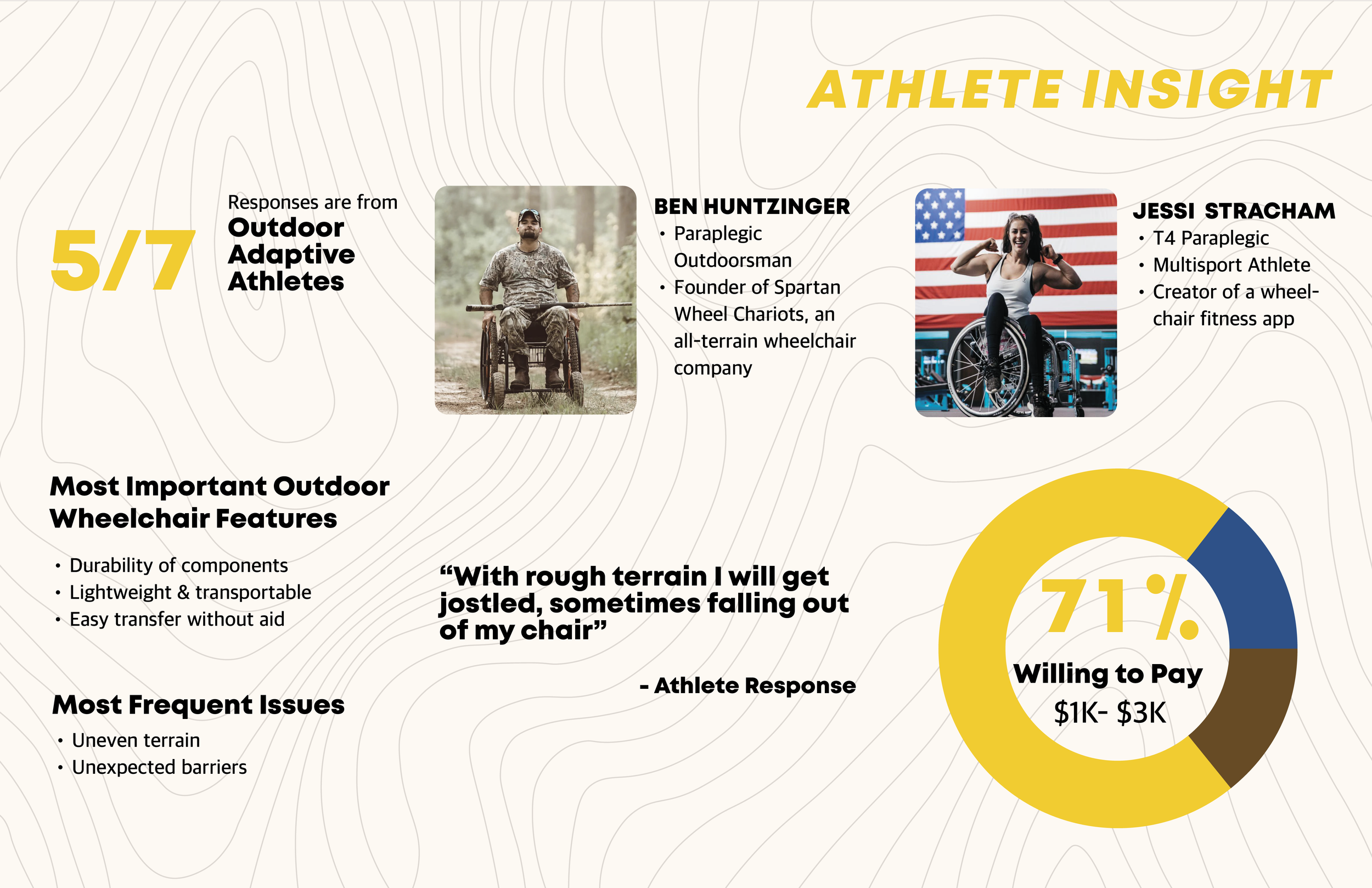
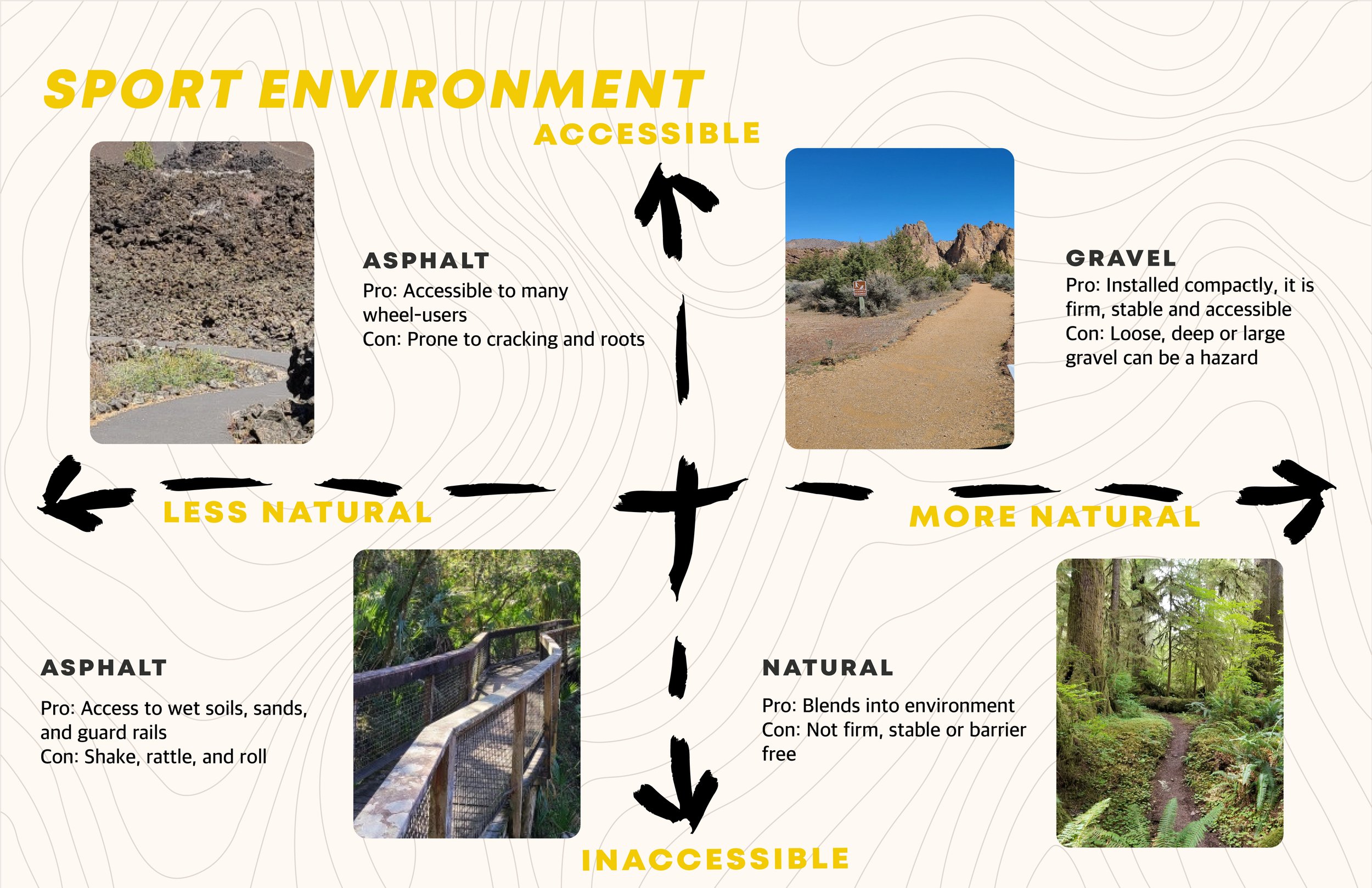

Understanding the Athlete Experience
As part of my research I conducted a survey study to determine adaptive athletes user experience on outdoor trails. I asked participants to answer several questions rating the frequency of difficulties navigating outdoor trails and ranking the top features they were looking for in an outdoor wheelchair. The responses support my findings that the wheelchair features adaptive athletes are most concerned about are:
Durability of components
Lightweight and transportable
Easy transfer without aid
In addition, the most frequent issues reported were uneven terrain and unexpected barriers. Furthermore, a majority of survey participants answered with a willingness to pay $1,000 to $3,000 for an outdoor wheelchair. It is worth considering that an outdoor wheelchair is not covered by medical insurance, and the typical price range of an outdoor wheelchair is $3,000 - $7,000. Finally, rough terrain is so challenging that one participant responded:
“With rough terrain I will get jostled, sometimes falling out of my chair”
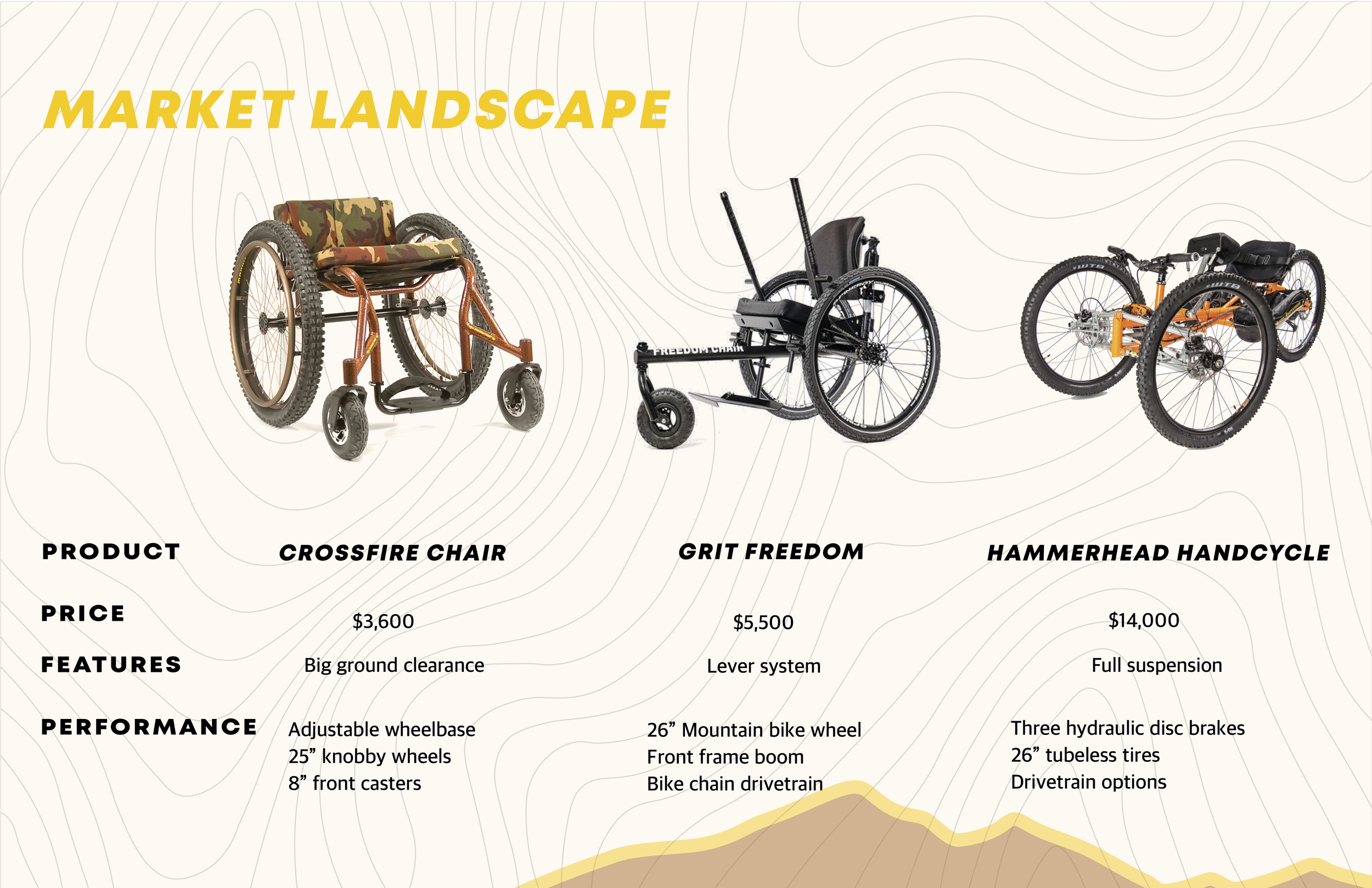
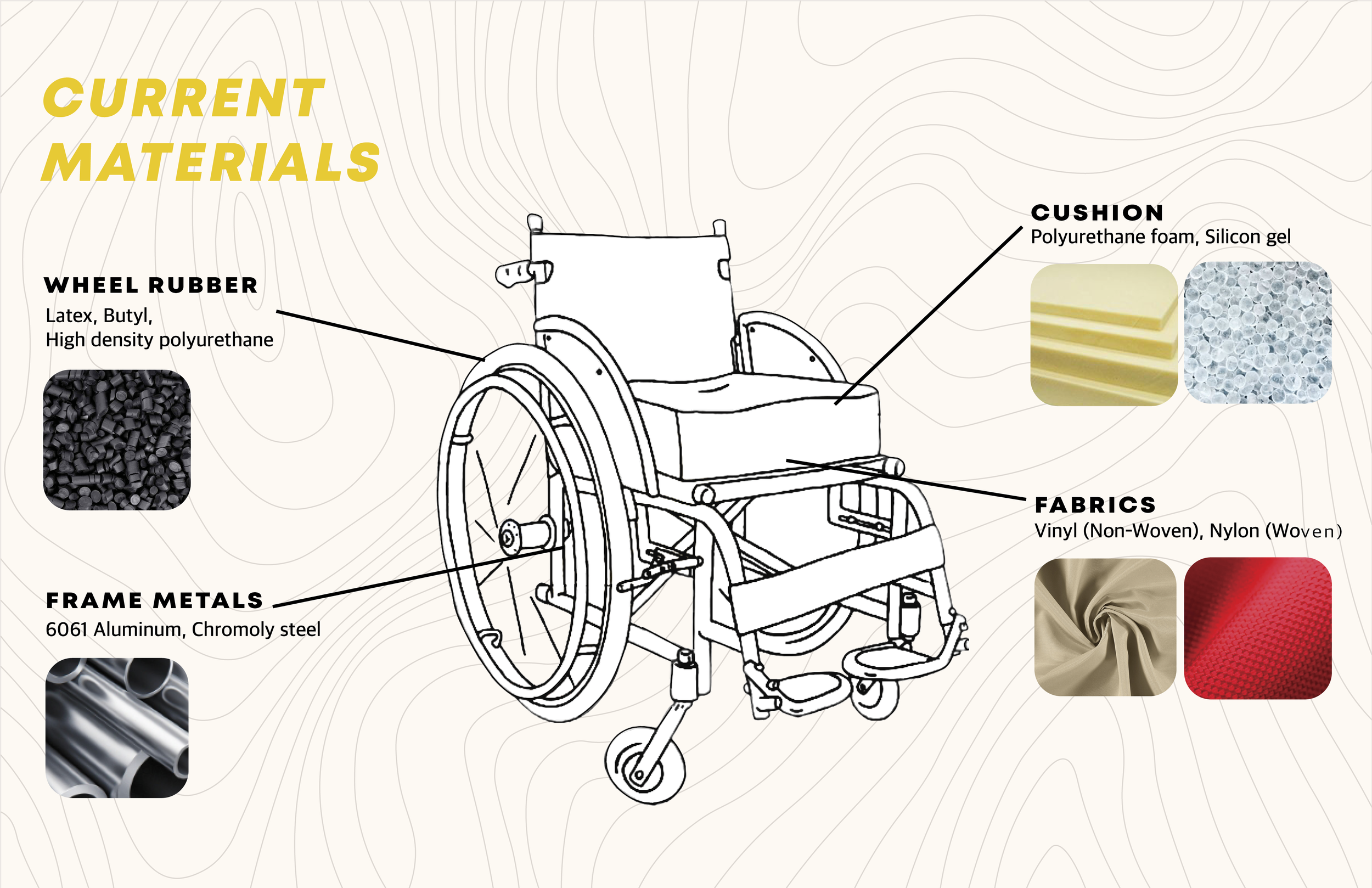
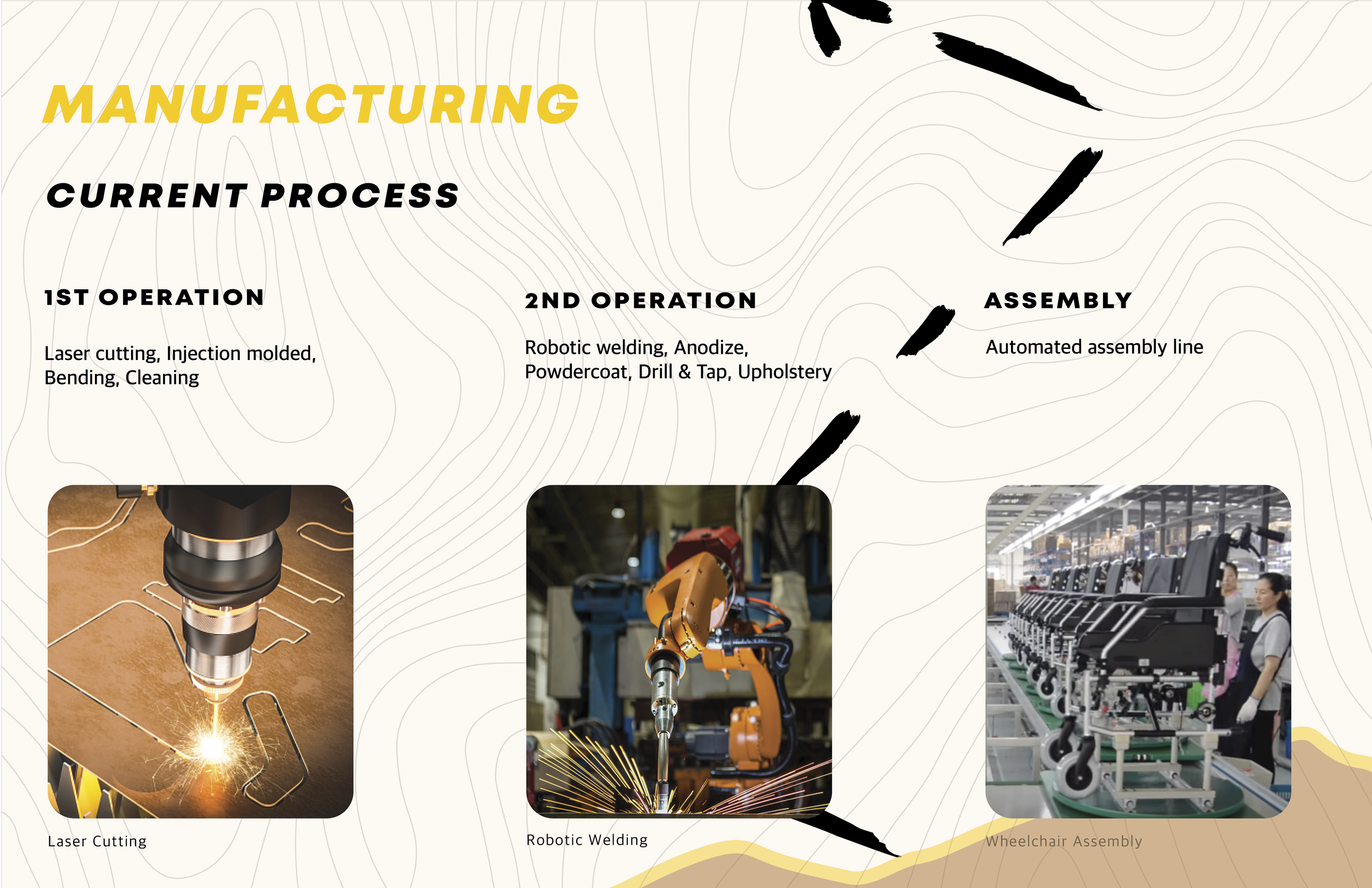
Tiered Market Landscape
Manual outdoor trail wheelchairs vary in ruggedness and complexity, ranging from affordable models like the Crossfire Chair with taller ground clearance and mountain bike tires, to more advanced designs like the Grit Freedom, which has an improved drivetrain and a hand lever system for increased torque on elevation. The most complex designs, such as the Hammerhead Handcycle, are essentially mountain bikes with hydraulic brakes, full suspension, and various drivetrain options, making them the most expensive option for adaptive athletes.
Could material and manufacturing innovations lead to a more affordable outdoor trail wheelchair?
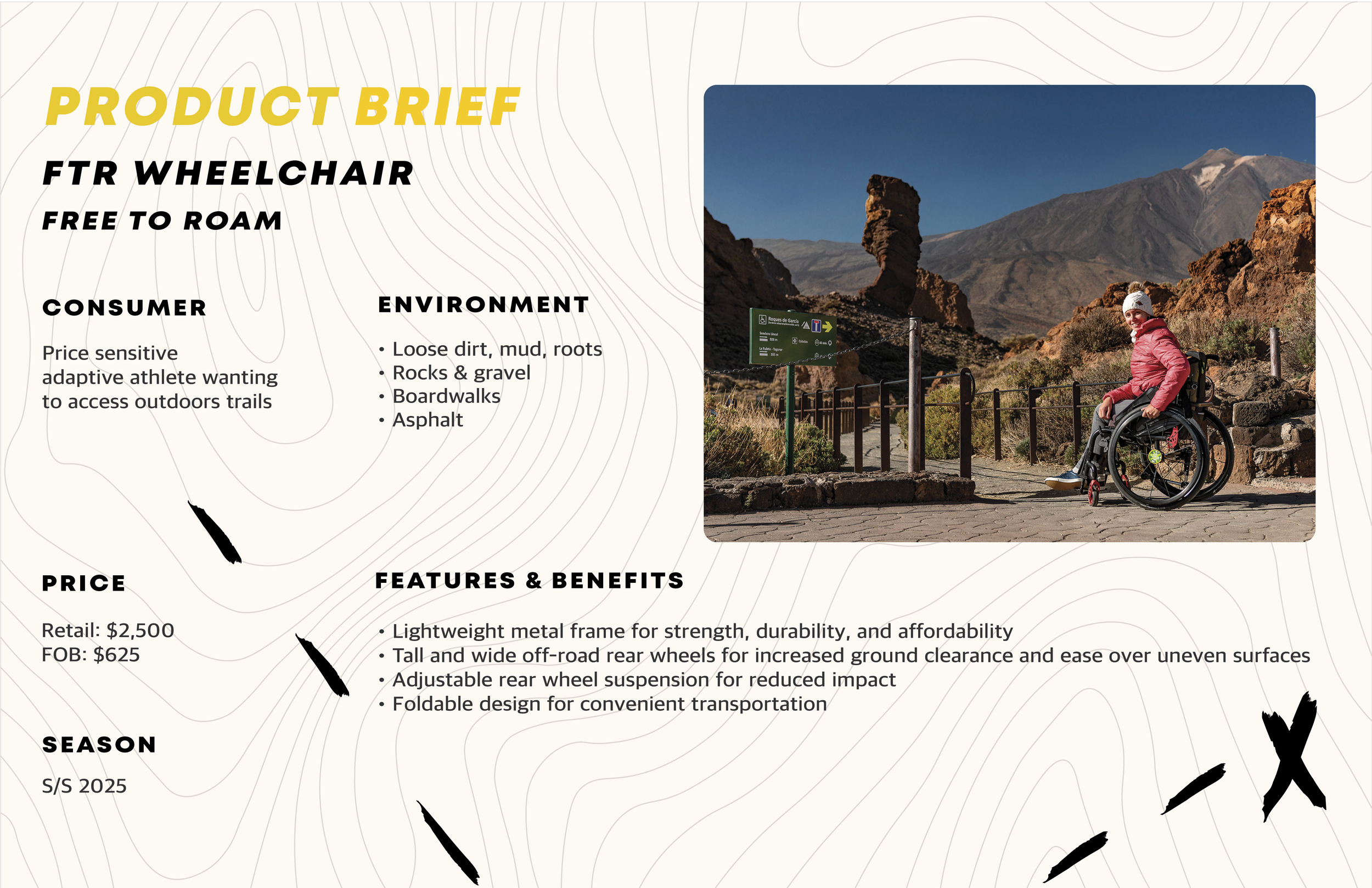
Innovation Opportunity
The current high prices for a quality manual outdoor trail wheelchairs than athletes are willing to pay represents a market opportunity. Price sensitive adaptive athletes want an affordable manual wheelchair that is lightweight, capable and durable than what is currently on the market. My product the FTR Wheelchair sold at a target price of $2,500, would make outdoor trails more accessible for the budget athlete.
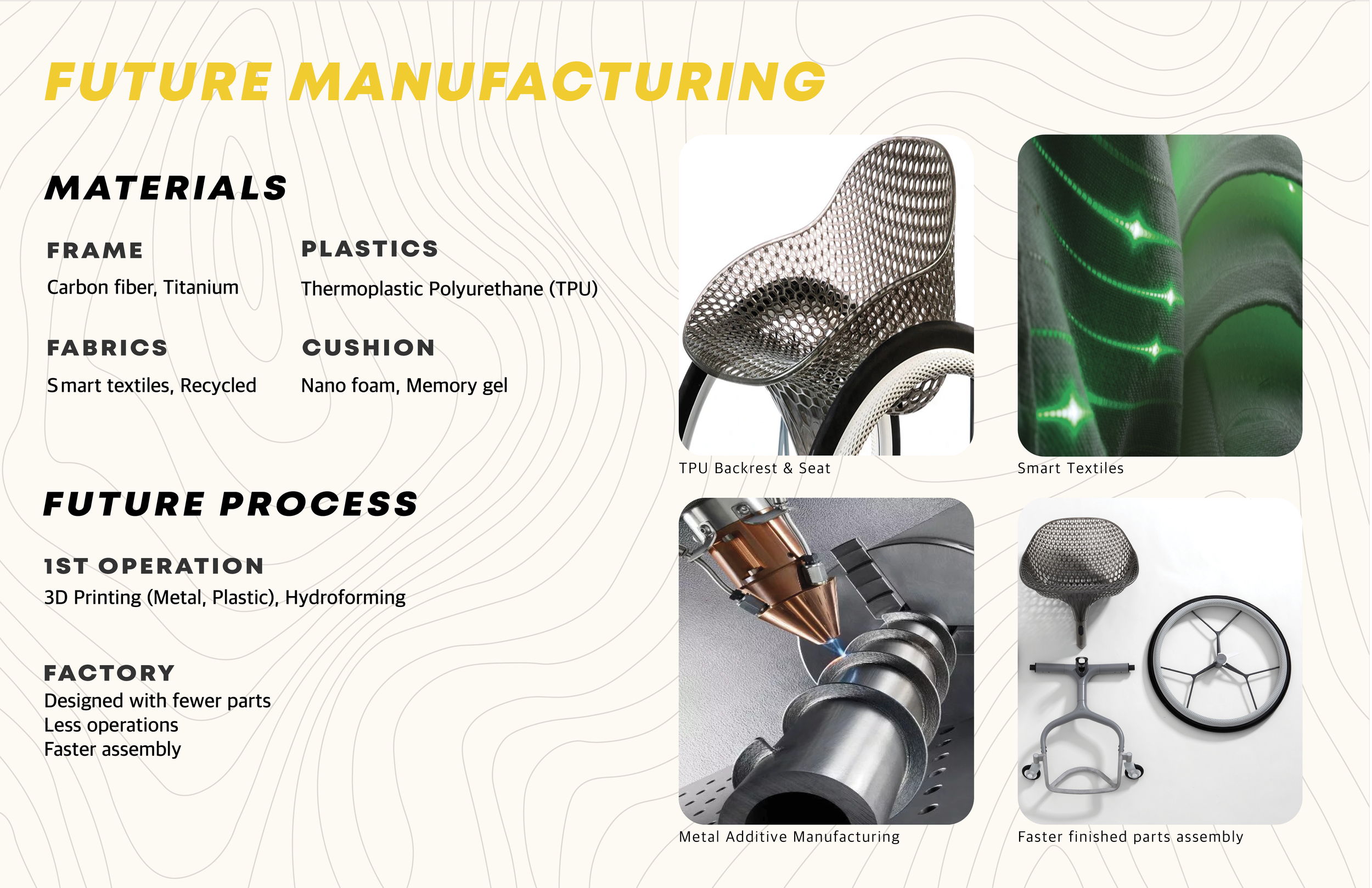

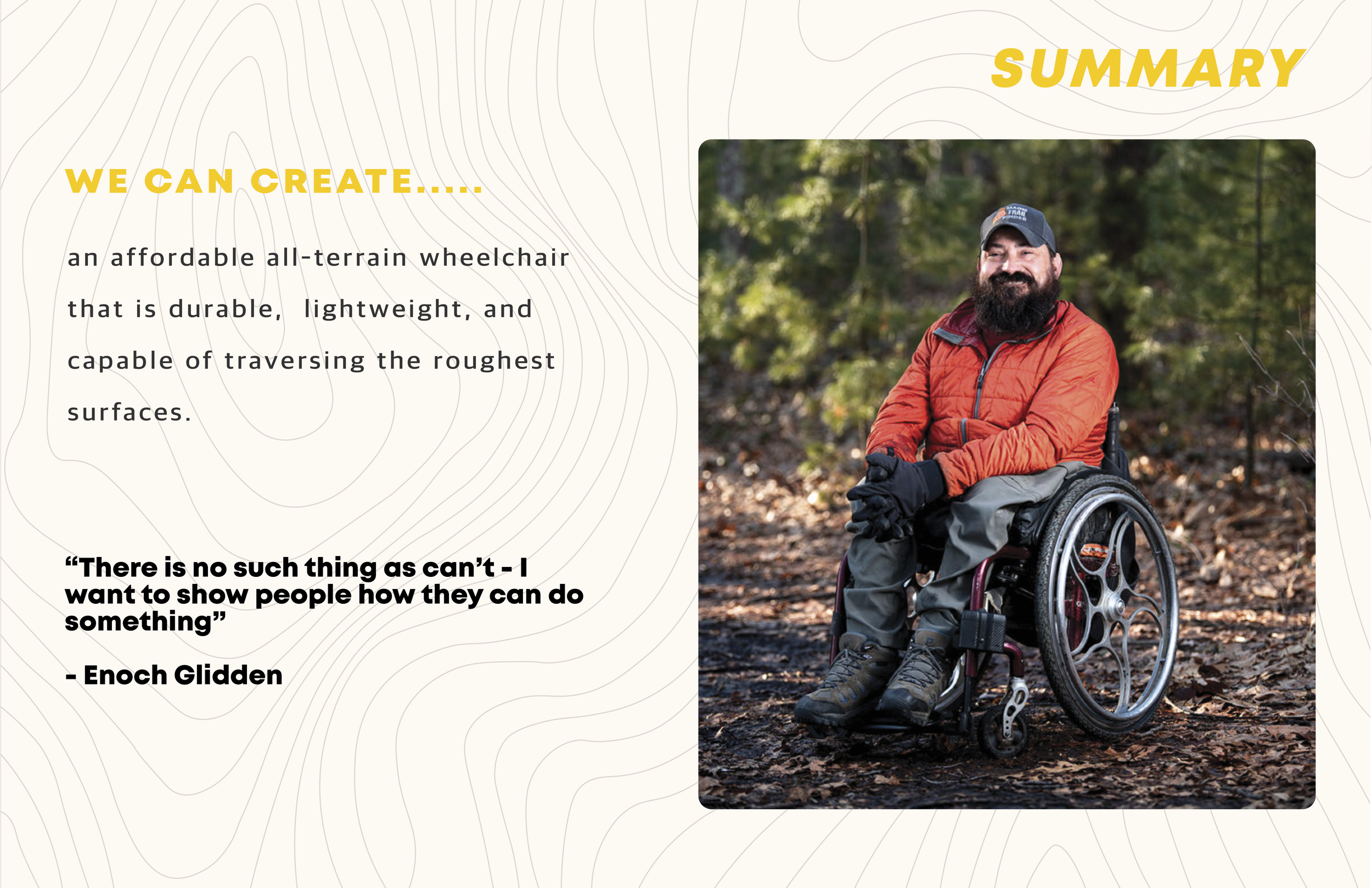
Final Presentation Critique
When I presented my final research to a group of University of Oregon Product Design professors, the critique I received was to consider what compromises would be needed to make a lightweight, durable, and affordable wheelchair. Their feedback was that it is unlikely that this new product would be able to deliver well on all three criteria without tradeoffs. Another feedback I received was that the price of custom 3D printing could actually make the new design more expensive than traditional manufacturing.


